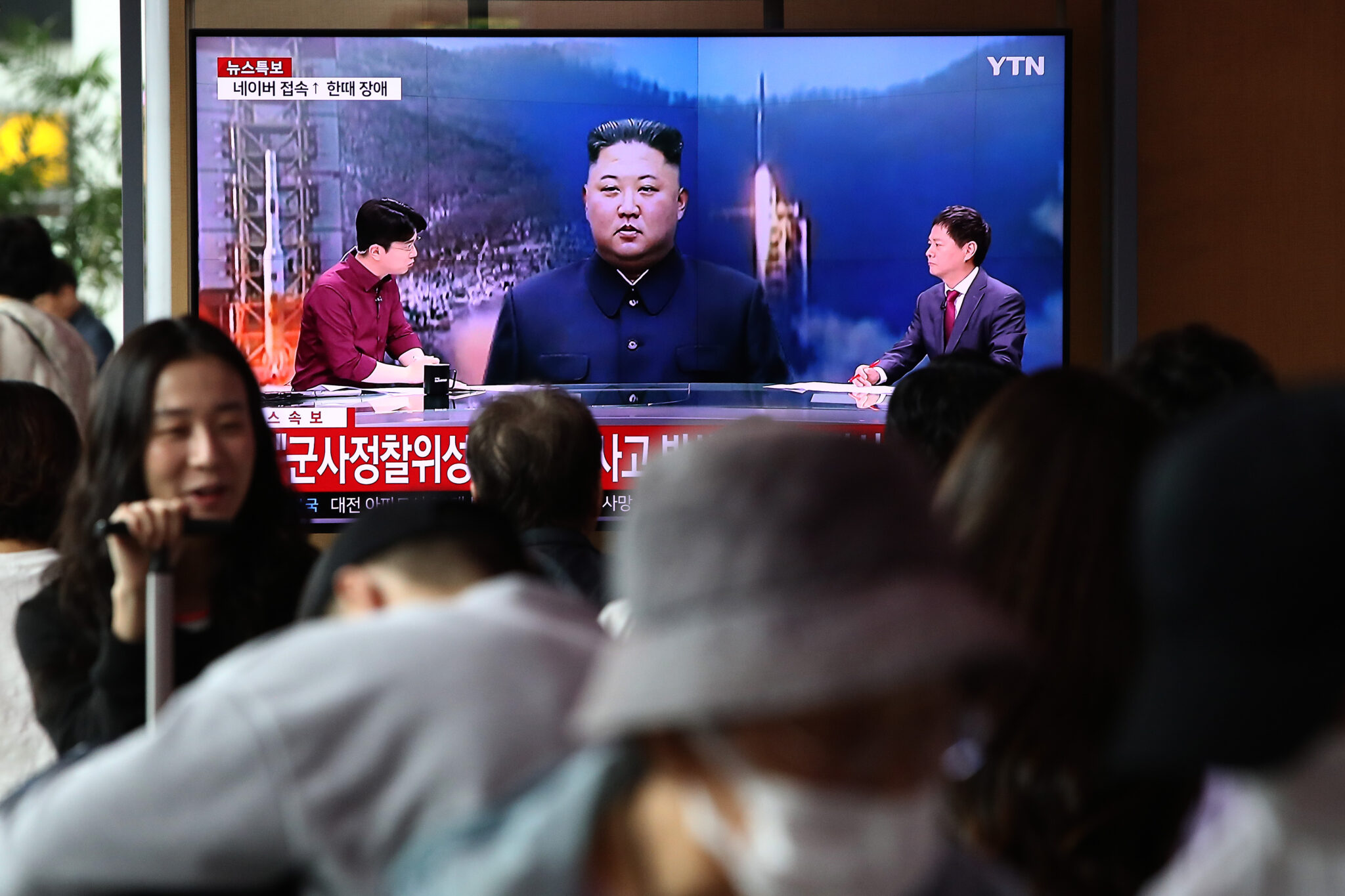[ad_1]

Jason Burke
If you’re just joining us, Israeli troops entered al-Shifa hospital early on Wednesday, conducting what it called a “precise and targeted operation against Hamas in a specified area” of the medical complex.
The decision to send troops into the hospital marks an escalation of Israel’s offensive in Gaza but and will fuel calls for a ceasefire that Israel has so far resisted.
Youssef Abu Rish, an official from the Hamas-run health ministry inside the hospital, said he could see tanks inside the complex and “dozens of soldiers and commandos inside the emergency and reception buildings”.
Dr Munir al-Bursh, director general of the Gaza health ministry, told Al Jazeera television that Israeli forces had entered the western side of the sprawling site. “There are big explosions and dust entered the areas where we are. We believe an explosion occurred inside the hospital,” Bursh said.
Fighting has raged around the Shifa hospital compound for many days, trapping around 1,200 patients and staff. The hospital, Gaza’s biggest, has become a strategic objective for Israel, which says there is an Hamas command centre in bunkers underneath.
Key events
IDF spokesperson: ‘IDF forces are operating at this time … at Shifaa Hospital’
Israel Defence Forces spokesperson Daniel Hagari has just released an update on the “targeted opration” inside al-Shifa.
He says, “IDF forces are operating at this time in a targeted manner at Shifaa Hospital,” and that, “The activity takes place in a defined complex for which there is intelligence information indicating terrorist activity by the terrorist organization Hamas and in accordance with an operational need.”
Hamas and officials of the Hamas-run health authorities in Gaza have denied the claims that Hamas is operating from the hospital.

Jason Burke
If you’re just joining us, Israeli troops entered al-Shifa hospital early on Wednesday, conducting what it called a “precise and targeted operation against Hamas in a specified area” of the medical complex.
The decision to send troops into the hospital marks an escalation of Israel’s offensive in Gaza but and will fuel calls for a ceasefire that Israel has so far resisted.
Youssef Abu Rish, an official from the Hamas-run health ministry inside the hospital, said he could see tanks inside the complex and “dozens of soldiers and commandos inside the emergency and reception buildings”.
Dr Munir al-Bursh, director general of the Gaza health ministry, told Al Jazeera television that Israeli forces had entered the western side of the sprawling site. “There are big explosions and dust entered the areas where we are. We believe an explosion occurred inside the hospital,” Bursh said.
Fighting has raged around the Shifa hospital compound for many days, trapping around 1,200 patients and staff. The hospital, Gaza’s biggest, has become a strategic objective for Israel, which says there is an Hamas command centre in bunkers underneath.
Here are some of the latest images from Gaza:




Patrick Wintour
In the UK, as the Labour leader Keir Starmer seeks to contain a rebellion of his MPs on Wednesday night by urging them to back humanitarian pauses as opposed to a ceasefire, the biggest pro-Israeli group inside the party has mapped out a diplomatic strategy for a two-state solution without Hamas.
Labour is divided over whether to call for an immediate ceasefire that may leave Hamas in power or instead call for “longer humanitarian pauses” to protect civilian lives, leading to a ceasefire.
Those in the party backing the removal of Hamas from power in Gaza, including Starmer, have been weakened by appearing implicitly to endorse the war aims and methods of Benjamin Netanyahu, the Israeli prime minister. Starmer, his critics say, has not mapped out a clear route to a two state solution.

But a new Labour Friends of Israel pamphlet written by Michael Rubin argues that there is a realistic diplomatic route to marginalising “the enemies of peace”, including the now unpopular Netanyahu.
It says, “the status quo has collapsed, and something new can be born as it was after the 1973 war”.
The steps required to be implemented in parallel are:
-
A gradual expansion of Palestinian Authority territory in the West Bank; freezing settlement construction in isolated settlements; and upgrading international recognition of Palestinian sovereignty in coordination with Israel, all on condition of anti-corruption reforms inside the Palestinian Authority.
-
An extension of the Arab-Israeli normalisation deals to include Saudi Arabia.
-
Inside Gaza, a Palestinian Authority-backed, but initially autonomous, technocratic leadership funded by Gulf state investment. Hamas would be removed from power.
-
Within Israel, a massive investment in a culture of peace, as achieved in Northern Ireland.
The pamphlet says, “Polling shows that support for Netanyahu and his far-right coalition members has plunged further since the outbreak of the war. Were an election to be held now, the National Unity party of pragmatic centrist Benny Gantz would emerge as by far the largest party”.
What is al-Shifa hospital?

Jason Burke
The Dar al-Shifa (House of Healing) hospital is a sprawling complex of medical facilities in Gaza City, in the north of Gaza. Located about 500 metres from the coast and a major north-south road, it comprises a group of six-storey buildings that dominate the skyline.
With between 600 and 900 beds and thousands of staff, it was the mainstay of healthcare provision locally, with a range of services that few of the other hospitals in Gaza could offer. Since the beginning of the war in Gaza, it has become a shelter for those displaced by the fighting and continuing Israeli bombardment.
Thousands of people have fled al-Shifa but health officials say remaining patients were dying due to energy shortages amid intense fighting between Israeli troops and Hamas militants. Life-saving equipment such as incubators cannot run without fuel to run generators. At least 32 patients, including three premature babies, had died over the past three days, Gaza’s Hamas-run health ministry said.
There are between 600 and 650 inpatients at al-Shifa, as well as 200 to 500 health workers, and about 1,500 displaced people seeking shelter there, according to information shared with the World Health Organization, which was posted on Sunday on X.
The Israeli military said it was providing safe corridors for people to escape intense fighting in the north and move south, but Palestinian officials inside al-Shifa said the compound was surrounded by constant heavy gunfire and that Israeli snipers are all around.
Summary
It is just before 8am in Gaza City. Here is where things stand:
-
The Israel Defence Forces (IDF) said early on Wednesday it was “carrying out a precise and targeted operation” against Hamas in al-Shifa hospital, the largest hospital in Gaza.
-
Gaza’s health ministry was quoted by Palestinian news agency Shebab as saying that “dozens of soldiers” have entered the al-Shifa emergency department building, and that tanks have entered the complex.
-
A witness inside al-Shifa told the BBC they saw six tanks and more than 100 soldiers inside the hospital complex, in the area around the emergency department. The Guardian has not been able to verify the claims.
-
Ahmed Mokhallalati, a surgeon at al-Shifa, has told Al Jazeera that Israeli tanks and bulldozers had entered the complex. ‘The firing is still heavy, and we are hearing explosions everywhere,’ he said.
-
Figures vary widely on how many civilians are at the site. On Sunday, the World Health Organization (WHO) put the figure at about 1,500 displaced people, up to 650 inpatients and 200 to 500 health workers.
-
A White House official, speaking after the operation was announced, said it does not want to see a firefight in a hospital. A spokesperson for the National Security Council, who did not wish to be named, said: “We do not support striking a hospital from the air and we don’t want to see a firefight in a hospital where innocent people, helpless people, sick people trying to get medical care they deserve are caught in the crossfire.
-
Israeli defence officials say they have agreed to allow fuel shipments into the Gaza Strip for humanitarian operations, the Associated Press reports. It is the first time that Israel has allowed fuel into the territory since the Hamas militant group’s bloody cross-border invasion on 7 October. The UN said the fuel will be “used exclusively to run trucks for the distribution of incoming humanitarian aid” and that “this represents a fraction of the fuel needs for humanitarian operations.”
-
The death toll in Gaza was not updated in Tuesday for the fourth day in a row, the UNOCHA says, “following the collapse of services and communications at hospitals in the north, the Ministry of Health”.
-
The UN Security Council is negotiating a new resolution that demands “immediate extended humanitarian pauses” throughout the Gaza Strip but makes no mention of a cease-fire, the Associated Press reported. The resolution, drafted by Malta, does demand that “all parties” comply with their obligations under international law. The Security Council has rejected four resolutions on the war, and many of its 15 members have said they don’t want a vote on a new resolution unless it’s going to be approved.
-
Joe Biden and Benjamin Netanyahu spoke “at length” about ongoing efforts to secure the release of hostages held by Hamas, including many children and a number of Americans, the White House said.
-
The IDF announcement of its operation came within an hour of Palestinian health officials in Gaza saying the IDF had told them it would raid the hospital “within minutes”. The Gaza health ministry spokesperson, Ashraf al-Qidra, told Al Jazeera that Israel “informed us that it will raid al-Shifa hospital complex in the coming minutes”.
-
On its Hebrew X account, the IDF appeared to signal that once inside the hospital, it would continue to have a presence there, saying, “in the continuation of the operation, incubators, medical equipment and baby food are expected to be transferred to the hospital”.
-
The White House has said it has intelligence supporting Israel’s claims that Hamas and Palestinian Islamic Jihad use some hospitals in the Gaza Strip – including al-Shifa hospital – to conceal or support their military operations and to hold hostages. “That is a war crime,” national security spokesperson John Kirby said, adding that those actions by Hamas did not lessen Israel’s responsibility to protect civilians in the course of its military operations.
-
Hamas said it strongly condemned and rejected the claims, adding that these statements “give a green light to the Israeli occupation to commit further brutal massacres targeting hospitals”.
-
The WHO has insisted that moving the most vulnerable patients from al-Shifa hospital has become an “impossible task”. WHO spokesperson Margaret Harris, speaking to reporters in Geneva, said the “heroic” health workers have been “doing whatever they can to keep going” while the facility has been without power since Saturday and there was not enough food and clean water.
-
Another 200,000 people have fled northern Gaza in the past 10 days, the UN has said. The UN office for the coordination of humanitarian affairs (Ocha) said on Tuesday that only one hospital in the northern half of the blockaded Gaza Strip, al-Awda, still had electricity and was able to receive patients, with other medical facilities in sprawling Gaza City now mostly functioning as shelters for those fleeing the violence.
-
Israeli authorities have said they have now identified the remains of 859 civilians killed during the 7 October Hamas attack inside southern Israel. The work to identify bodies is ongoing, they said. On 10 November, Israel revised down the number of Israeli deaths on 7 October from the previously given figure of 1,400 to 1,200.
-
The families of Israelis being held hostage by Hamas have started a five-day march on Tuesday from Tel Aviv to Jerusalem to demand the government does more to secure their release. The prime minister, Benjamin Netanyahu, is coming under fierce criticism from some relatives for not doing more to secure their release, even as Israeli troops push further into the Gaza Strip and the region is bombarded by the Israeli air force.
-
Tens of thousands of demonstrators have gathered in Washington on Tuesday to support Israel, condemn antisemitism and demand the release of the hostages. US Senate majority leader Chuck Schumer and House Speaker Mike Johnson spoke at the “March for Israel” event on the National Mall, as well as family members of the hostages.
Gaza death toll has not been updated since Friday
The death toll in Gaza was not updated in Tuesday for the fourth day in a row, the UNOCHA says, “following the collapse of services and communications at hospitals in the north, the Ministry of Health”.
The UN agency says:
The reported fatality toll of Palestinians in Gaza as of 10 November at 14:00 (latest update provided) stood at 11,078, of whom 4,506 were said to be children and 3,027 women. About 2,700 others, including some 1,500 children, have been reported missing and may be trapped or dead under the rubble, awaiting rescue or recovery. Another 27,490 Palestinians have reportedly been injured.
182 Palestinians have been killed in the West Bank since 7 October, the UN says, 46 of whom were children. Eight people were killed in the 24 hours to Tuesday.
Fuel Israel will allow into Gaza ‘represents fraction’ of humanitarian fuel needs, says UN
That UNOCHA update also says that while Israel has agreed to today allow fuel into Gaza for the first time since 7 October, the fuel will be “used exclusively to run trucks for the distribution of incoming humanitarian aid”.
The UN agency said, “This represents a fraction of the fuel needs for humanitarian operations.”
Here is the full paragraph from the UN update on Tuesday evening:
Although 91 trucks carrying humanitarian aid entered from Egypt on 14 November, the distribution of supplies to shelters, clinics and other beneficiaries has largely come to a halt due to lack of fuel. The Israeli authorities have indicated that, on 15 November, they would allow the entry of a limited amount of fuel into Gaza, to be used exclusively to run trucks for the distribution of incoming humanitarian aid. This represents a fraction of the fuel needs for humanitarian operations. Meanwhile, the entry of fuel for any other use, including the operation of generators at hospitals, and at water and sanitation facilities, remains banned. This will be the first time since 7 October that fuel is allowed into Gaza.
Only one northern Gaza hospital still operational
In case you missed this earlier, the United Nations Office for the Co-ordination of Humanitarian Affairs says that just a since hospital in northern Gaza is still operational.
In its latest update, published on Tuesday evening in New York, it said:
Only one of the hospitals in Gaza city and northern Gaza (hereafter: the north) is reportedly still operational at a minimum level for those inside the hospital, as of 14 November; all others have ceased operations due to the lack of power, medical consumables, oxygen, food and water, compounded by bombardments and fighting in their vicinities. Al Ahli Hospital, in Gaza city, currently accommodates over 500 patients and is reportedly the sole medical facility able to admit patients in the north. However, it too faces increasing shortages and challenges.
[ad_2]
Source link


























